![]()
letter-to-the-french-government.docStop Press: Ten crates containing rare archaeological treasures of Bangladesh have been bundled out of the national museum and are said to be bound for Guimet Museum in Paris, via flight AF 6731 (dep: 1205 Saturday 1st Dec 2007). Preparations had been made to secretly remove the items through a shipment order by the French Embassy made to Homebound Packers and Shippers. Trucks and forklift arrive secretly in museum in early hours of morning. But the news leaked and media professionals and protesters gathered outside the museum. Under heavy police presence Homebound vehicles (Dhaka Metro Umo 11-0814, pho 11 3634, U 14 0187) and fork lift trucks all bearing “Save The Children and USAID Cyclone Sidr Emergency Relief ” signs were used to remove the priceless items. Predictably, and as in the case of all previous authoritarian governments, while the story was the lead news in all major newspapers and independent television channels. BTV the state run television channel which is the only terrestrial channel in Bangladesh, failed to report the incident altogether.
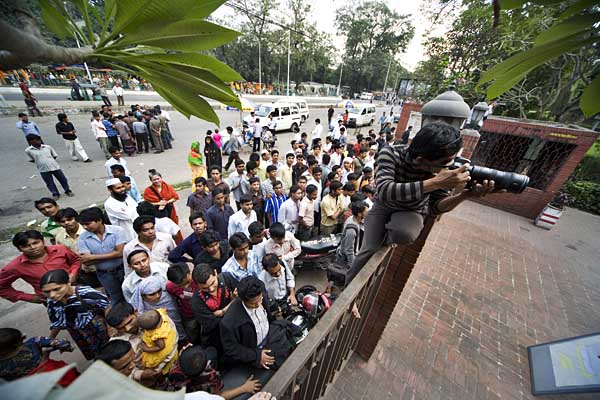
Protesters and media professionals watching as crates get loaded onto Homebound trucks. ? Shahidul Alam/Drik/Majorityworld
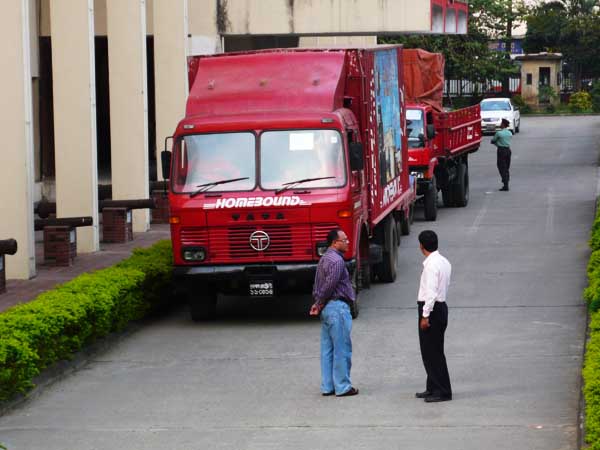
Homebound trucks preparing to leave National Museum. ? Shahidul Alam/Drik/Majorityworld
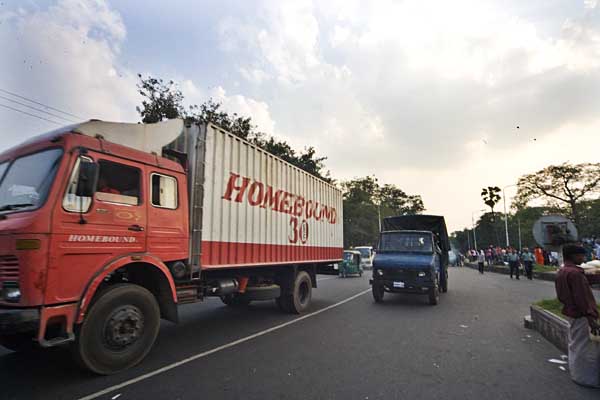
Trucks being escorted out of National Museum by police. ? Shahidul Alam/Drik/Majorityworld
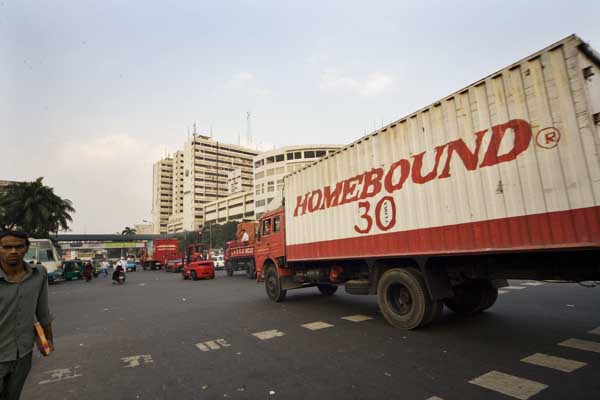
Homebound convoy heading to airport. ? Shahidul Alam/Drik/Majorityworld
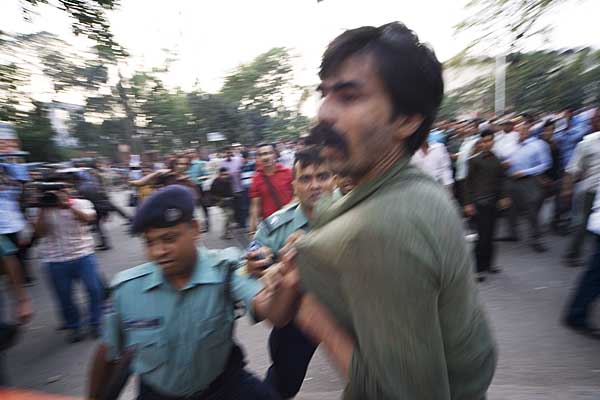
Police arrest Shekhar Shaswata. ? Shahidul Alam/Drik/Majorityworld
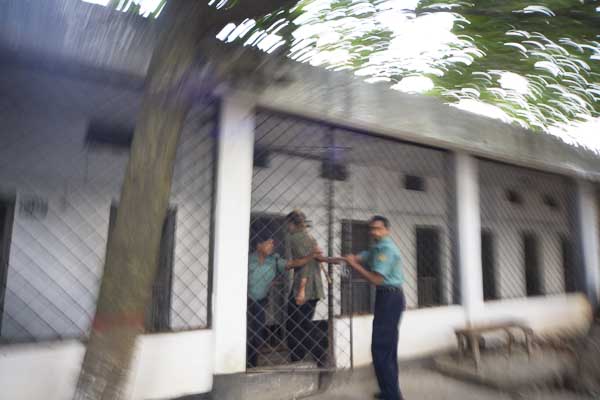
Shekhar being taken into custody. ? Shahidul Alam/Drik/Majorityworld
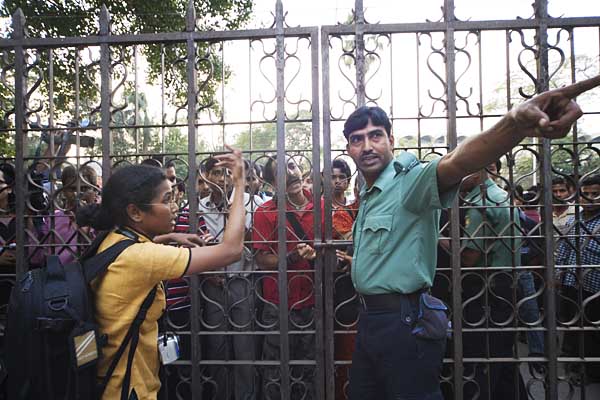
Media professionals demanding to be let in. ? Shahidul Alam/Drik/Majorityworld

Further clashes with police. ? Shahidul Alam/Drik/Majorityworld

Media storm into Shahbagh police station. ? Shahidul Alam/Drik/Majorityworld
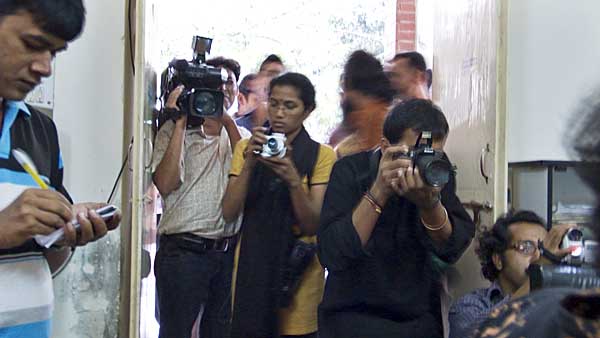
Media in officer Morshed’s office. Morshed claims he knew nothing of what was going on all day across the road. ? Shahidul Alam/Drik/Majorityworld
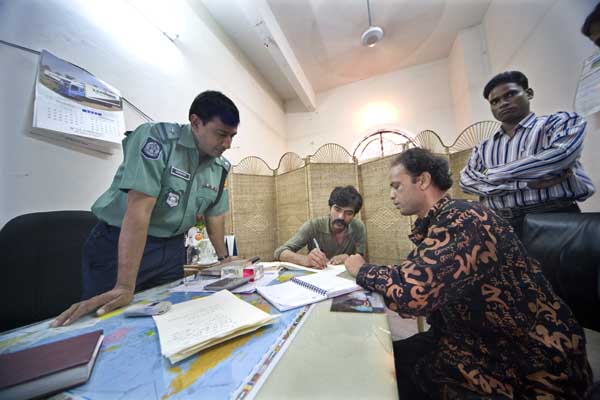
Shekhar being released upon signed undertaking by those demanding his release. ? Shahidul Alam/Drik/Majorityworld
Protesters clashed with police. Shekhar Shashwata was arrested, and some media professionals roughed up. Eventually protesters were able to get Shekhar released. Police officer Morshed who made the arrest, claimed he “knew nothing about what was happening across the road.”
The lack of transparency surrounding the exhibition has led to huge controversies where leading citizens have demanded that the government and the French Museum allow experts to inspect the items being taken away. Past allegations of art objects having been taken to France and never returned have increased the suspicion.
While the government has appointed a committee to investigate the matter, in an unprecedented move, government and French Embassy officials have, without informing either the committee or the media, taken the items out of the museum in what resembled a police protected museum robbery.
Protesters are asking international media to disseminate the news, and prevent the artefacts from being taken away in this manner. Bangladesh is under emergency rule where protests and gatherings of any form are illegal, and police have wide ranging powers. After a recent unrest at the universities arrest warrants were issued against 8,300 largely unnamed people. Teachers, students and university employees arrested after the event are yet to be released. There have been accusations of torture in custody.
———-
Earlier on in the day:
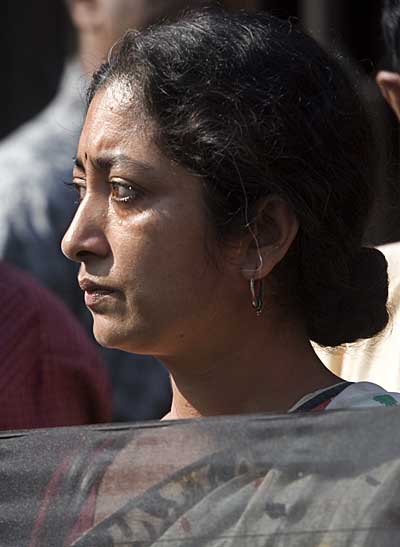
Above: Tearful protester outside museum at 10:15 AM 30th November 2007. Below: Homebound truck with Cyclone Relief sign outside museum.
? Shahidul Alam/Drik/Majorityworld
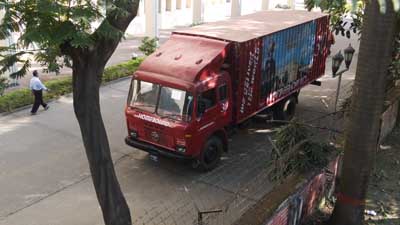
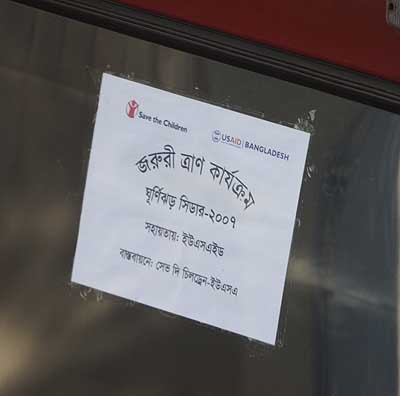
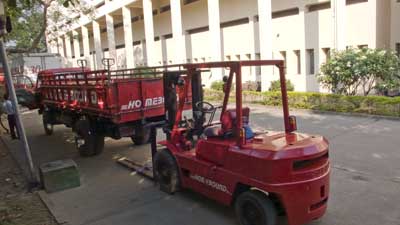 Forklift on standby
Forklift on standby
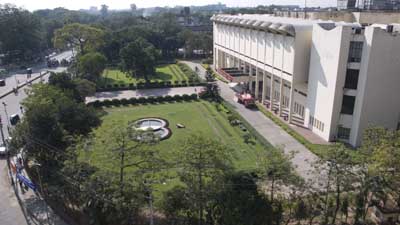 Forklift in front of Museum
Forklift in front of Museum
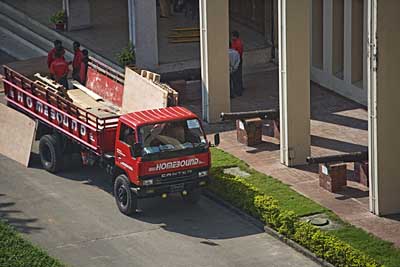 Homebound in line of fire
Homebound in line of fire
 Protesters outside museum
Protesters outside museum
Video of protests. ? Rabeya Sarkar Rima/DrikAV
The background to the story by Anisur Rahman
Letter to the French Government by prominent citizens
1st Video Clip of Protest Press Conference. ? Naeem Mohaiemen
2nd Video Clip of Protest Press Conference. ? Naeem Mohaiemen
———————————————————
The Price of Priceless Objects by Shahidul Alam
This was breaking news. Shishir Bhattacharjee, Nisar Ahmed and Rahnuma were racing against the clock. The pukur churi (daylight robbery, lit: pond stealing) had to be stopped. Bangladesh is awash with conspiracy theories and I needed to be convinced that something irregular was really taking place. A major exhibition of Bangladeshi heritage in a well-known western museum seemed a good thing. I wanted hard facts. Facts emerged, and eventually tumbled out.
The issue in question was a proposed exhibition at the Mus?e National des Arts Asiatiques – Guimet, in Paris, where some of the most prized archaeological objects collected from the five major museums would be on display in an exhibition announced on the Museum website as “Masterpieces of the Ganges delta. Collections from the Bangladesh Museums.” The only suggestion that things might not be going entirely as planned came from the notice “dates to be confirmed.” The France Guide still lists the original dates: 24/10/2007 to 03/05/2008.
Doubts had been raised about the transparency of the process through which the exhibition had been arranged. With leading national experts calling for a stay order and the court requiring the government to demonstrate that due process had been maintained,
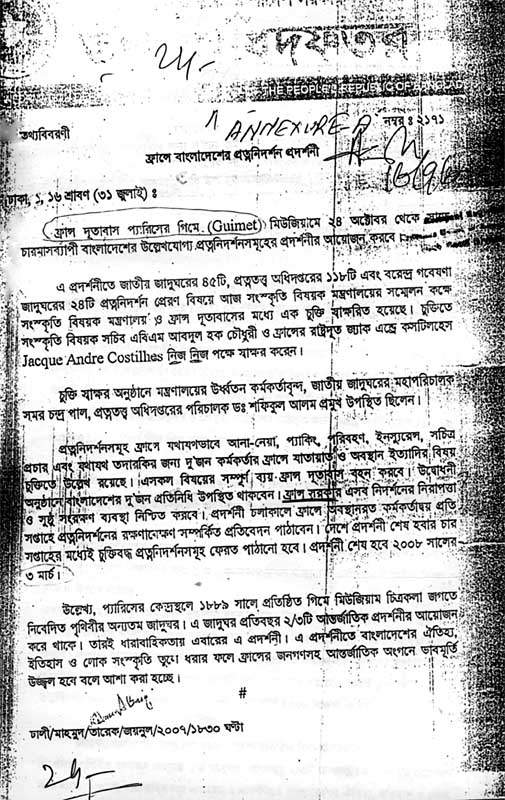
things were getting murky. A hastily called press conference by the French Embassy landed them in further trouble. The Ambassador was promptly withdrawn. Unconnected some say, but unusual in a country where the departure of western ambassadors is generally accompanied by considerable fanfare.
“Some Bangladeshis who want to improve the image of Bangladesh abroad have been supporting the exhibition”, the new ambassador stressed. The suggestion that the Bangladeshi experts who had questioned the intentions of this prestigious museum and the French government itself, and even had the audacity to suggest that the French might possibly have intentions not entirely in keeping with Bangladeshi interests, were unpatriotic, was perhaps unintentional.
Not a hair on Sita’s head was singed as she had walked through the flames. But she had been doubted, and she felt only the test of fire could prove her innocence and her loyalty. Who is loyal to Bangladesh is now the question. Protagonists of the proposed exhibition at Guimet promptly dismissed the ones who demanded transparency, as Talibans and enemies of the state. My beard didn’t help.
The fact that these very experts had over the years been the mainstay of collecting, creating and nurturing these collections, didn’t appear to affect the French argument. Given Kwame Opoku’s recent statement “Mus?e Guimet in Paris which incidentally also holds thousands of stolen/illegal objects from China and the rest of Asia,” one would have expected the French to be more concerned with damage control.
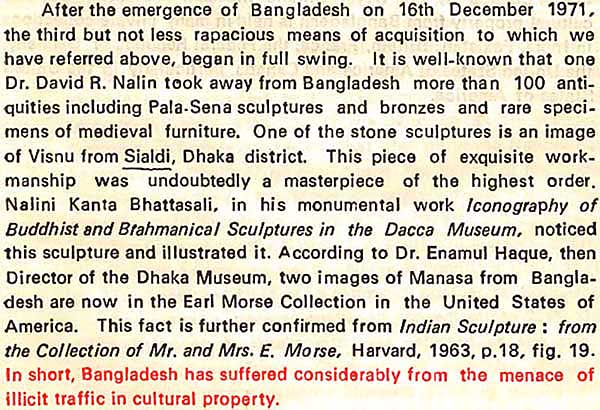
Extract from “The Museums in Bangladesh” by Firoz Mahmud and Habibur Rahman from the chapter initiated by the “Ad Hoc Committee on the Return and Restitution of Cultural Property to its Countries of Origin” set up by the International Council of Museums ICOM. Page 487.

Extract from list of organisations and locations where stolen Bangladeshi cultural property have been illegally taken. Page 488
Or was this an attempt to gain what they could before the cat got out of the bag? Els Van Der Plas, the director of the Prince Claus Fund in the Netherlands, held Guimet in high regard and had respect for the director. June Rollinson of the British Council in Dhaka, also spoke highly of the Guimet. Mark Haworth-Booth, former senior curator of the Victoria and Albert Museum in London, was an old friend and had been a guest teacher at Pathshala. He fully supported museums lending work to each other but felt a shared copyright of the photographs (the contract gave Bangladesh no rights over the images of the artefacts) would have been the normal practice.
However it was Mark’s comment “I do not think that professionally-run museums would lend an object if it had no accession number” that got me going. The appendix listing the items, obtained by court order, was a farce. The number of items varied in different reports. We managed to obtain the French internal listing which had 20 more items than the Bangladeshi list. These had been obtained in a joint excavation (France and Bangladesh) in Mahasthangar, and were all marked ‘reserved’. Items had been clumped together without individual listing (e.g. ’93 punch-marked coins’). Insurance value was sometimes missing. The basic documentation of a normal museum inventory, like period, condition and markings were missing. A large number of items had no accession numbers. And this was a listing of the most precious items belonging to Bangladesh, many of which Bangladeshis themselves had never had the opportunity of seeing! Not even the nation’s leading scholars, researchers historians or archaeologists. Certainly, it was the Bangladeshi side that should have provided these details, but with UNESCO stressing ‘due diligence’ on the part of the borrower, to accept such a precious consignment on the basis of such flimsy documentation, was fishy. More importantly, there was no way in which even the most diligent officials could verify that the objects lent, were indeed what had been returned.

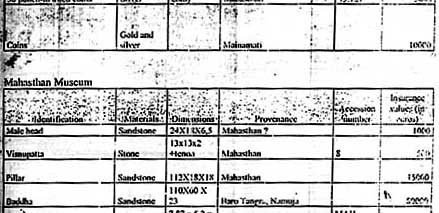
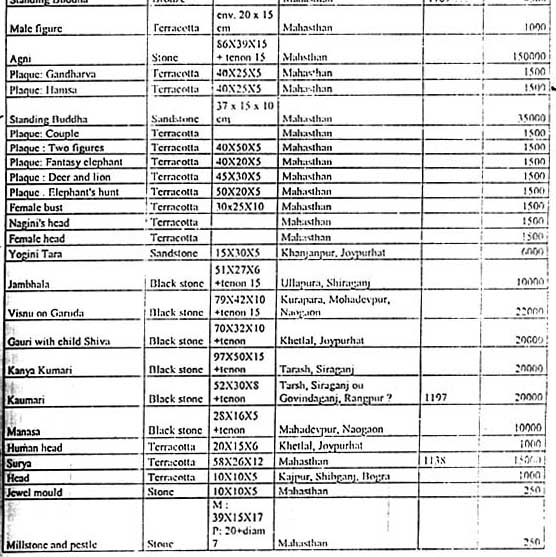

This was what the French press release had insisted was ‘complete documentation’.
When Jos van Beurden sent me his soon to be published article “Diplomats and smuggling of art” providing extensive and well documented instances of how majority world countries had their art objects stolen by wealthier ones via diplomats, it appeared as if it is the image of France and not of Bangladesh that needs rescuing.
With some juggling of schedules, I was able to combine a trip to Paris to show a newly made film, with the possibility of a trip to the Guimet.
Mus?e du quai Branly, the museum inviting me, was also on the ‘wanted’ list put together by Opoku and others. I needed no further convincing. I was off to Paris.
Quai Branly had sent a car to pick me up from Charles de Gaulle airport, and it was with considerable curiosity that I asked the driver what he thought of the Guimet Museum. Xavier had never heard of the place. I must have been unlucky with my driver, for Michel Philpott of Le Monde du, who had invited me, did indeed know the Guimet. It was perhaps not amongst the finest in the world, but still an important museum. It was also within walking distance.
The following morning, my Armenian photographer friend Ruben and I decided to pay the Guimet a visit. I had my HDV video camera with me. I had done a few other things in preparation too, like writing to the press officer Helene Lefevre, asking for an appointment. She did respond to my mail, but no appointment had been granted. I had been concerned that the Bangladeshi government had no rights over the photographs taken by the French photographer, but a mail to him also failed to elicit a reply. So Ruben and I were taking our chances. With my own work having been shown at the Centre Georges Pompidou fifteen years ago, I thought I had the credentials as an artist. I also had my press pass.
Crossing the Seine on a sunny Paris day, looking back at the Eiffel Tower, walking through the manicured pathways with Parisians striding by in their haute couture, I could picture Doisneau photographing the famous kiss.
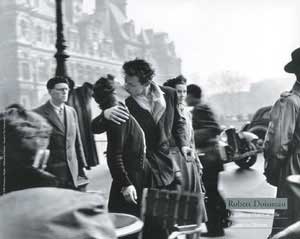
The Kiss. ? Robert Doisneau/Magnum
Finding the museum in the busy Paris map was not easy. Tucked away in the edge of a roundabout in Avenue D’Iena, was our famous Mus?e Guimet. Two homeless people had camped outside on the footpath, and children were having lunch on the short staircase. This represented the reality in all our countries but is distant from the image the establishment generally tries to provide.
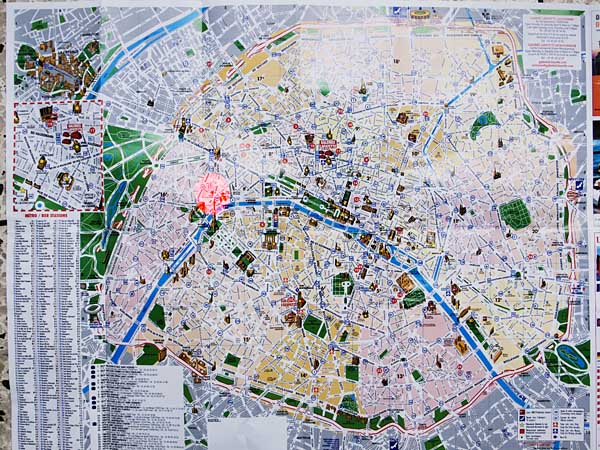
Map of Paris. Guimet Museum shown as small dot in centre of red circle.


Left: Homebound truck loading outside Bangladesh National Museum 11:15 AM 30th November 2007. Right: Homeless people outside Guimet Museum. Paris. France. 31st October 2007. ? Shahidul Alam/Drik/Majorityworld
I felt at home as I walked through the small entrance. This was far less pretentious than our own national museum. The informality of the place was comforting. The elderly gentleman beside us as we stood at reception overheard me asking about the Bangladeshi exhibition. Speaking with an American accent he remarked on what a fine show it would be. “It was taking time, but it would definitely be there.”
I was in journalist mode, and having discovered that he was Ambassador Dean and a board member of Guimet, gently led him on to the sort of work the museum was known for. He pointed out that the museum had just restored the head of a Cambodian statue to its body after 500 years. “Where was this statue?” I asked in as innocent a tone as I could muster. “Right here in this museum” was the proud board member’s reply. The head that was France’s gain, was presumably Cambodia’s loss.
I was lucky. Both the director of Guimet Jean-Francois Jarriage and the curator of the show Vincent Lefevre, were available that day, and didn’t appear to have any appointments at that time. I handed over my card, and spoke to Anna the director’s secretary, over the phone. She hadn’t seen my card then, but when I explained over the phone that I was from Bangladesh, I could sense a chill. Suddenly everyone clammed up. Neither the director nor the curator was able to see me, and no one in the museum would make any comment. Perhaps it was years of colonialism that had shaped our behaviour, or our rustic mannerisms of hospitality. I couldn’t help wondering how a visiting journalist who had arrived at the doorstep of any of our museums, would have been drowned with cups of sweet tea laced with condensed milk by the time the director had come over.
It was only a month ago when I had walked through the national museum at Siem Reap, aghast at the rows of ancient Cambodian statues whose heads were missing. One wonders where the heads have landed up. Ambassador Dean’s quest for restoration might just result in Guimet’s acquisition of the remainder of the bodies.
“Masterpieces of the Ganges delta.” France’s gain, Bangladesh’s loss?
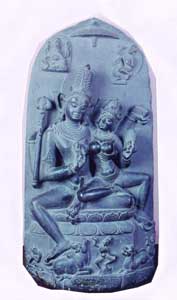
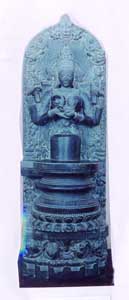
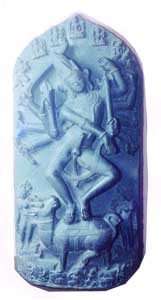
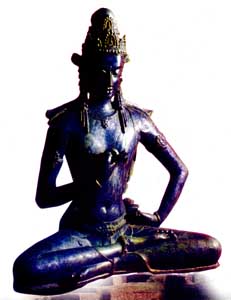
Some of the rare sculptures being taken to Guimet Museum
Article by Kwame Opoku





Leave a Reply
You must be logged in to post a comment.